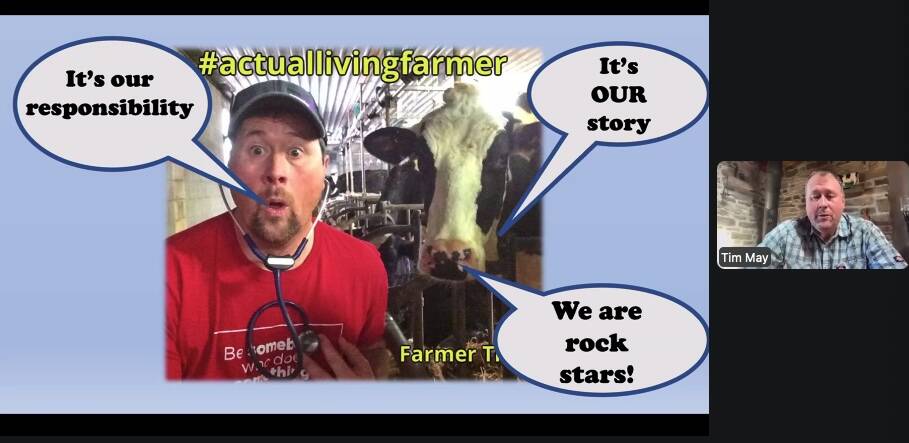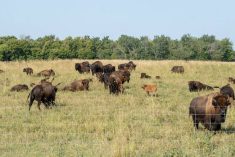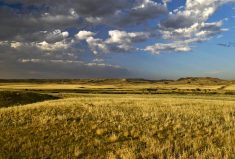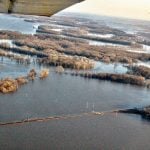The Nature Conservancy of Canada is launching a “once in a generation” project in the wake of a 6,700-acre private land donation.
The property is northwest of Winnipeg in the Rural Municipality of Woodlands, on the shores of East Shoal Lake. The NCC wants it to become an accessible conservation area that will engage local residents, provide ecotourism opportunities and connect visitors to nature.
“To date, it’s the second largest secure land project that we’ve done,” says Tim Teethart, a natural area manager for NCC.
Read Also

Sharing stories to promote Canadian farm safety
Personal stories can sometimes go farther than facts and data to promote safe practices on Canadian farms, Canadian Agricultural Safety Association conference attendees hear.
The conservancy manages a tall-grass prairie reserve in what it calls the north block, which is just over 7,000 acres. Teethart says it took about 30 years to build up that land base.
“Having something like Lake Ranch as a single project was something relatively new for us in Manitoba, and we were really fortunate that private donors stepped up to help us conserve that property.”
History
The land was originally part of Richardson Stock Farms, purchased in 1932 and was called Lakevue Ranch at the time. The property had little value outside of pasture. A 1950 article in Canadian Cattleman described the property as follows: “Lakevue Ranch is the prairie primeval, pancake flat, broken only by poplar bluffs, wild plum trees and saskatoons. Only the garden by the ranch house is cultivated.”
[RELATED] Home to roost
In the 1960s, a German company called the Lake Ranch Group bought the land and continued to run it as a ranch. As the original partners passed on, the second generation of owners had less interest in ranching.
“They just didn’t have that connection to the property that their parents did,” says Teethart. “Some of them hadn’t been to Canada or visited that property so they were just looking to divest themselves of it.”
The BSE crisis in the early 2000s was the final straw. Dealing with it from afar was untenable so the owners decided to establish an eco-village on the property. They got as far as approval for a development plan for cottage lots from the municipality of Woodlands.
Then the 2008 financial crisis put the tender selection on hold. Flooding in 2009 and 2011 worsened the situation. As the roadblocks mounted, the Lake Ranch Group sought an exit strategy and decided to protect it by donating it to the NCC.
Teethart credits now-retired but long-time NCC employee Gene Fortier for getting the ball rolling on the project.
Fortier’s family homestead was adjacent to the Lake Ranch property, so he knew it well and also knew the owners. He was able to convey the owners’ vision of a working landscape with cattle grazing in conjunction with conservation management. Fortier retired from the NCC in 2014, but discussions continued with the Lake Ranch Group.

Still grazed
The new status will retain cattle grazing on the land and NCC will establish grazing leases with producers.
It approaches cattle grazing leases in much the same way as a community pasture. To determine rates, it considers what a community pasture might charge, but will discount slightly to account for its hands-off approach to herd management.
“We’re not actively moving the cows and the producer who has the lease does the maintenance throughout the year,” says Teethart. “That’s one of the reasons we keep some of those costs a little lower.”
[RELATED] DUC honours conservation leader
From a conservation standpoint, cattle grazing activity approximates the disturbance bison provided for the landscape before agriculture took over.
“By partnering with us, (lease holders) are doing a service for us at the same time,” says Teethart.
Speaking at a media event to announce the Lake Ranch project, NCC’s Manitoba vice-president Kevin Teneycke said the area is special.
“It’s difficult to overstate the significance of this project from a biodiversity perspective.”
Teneycke said about 1,200 acres of the property are tall-grass prairie and it’s estimated that only one per cent of the province’s natural tall-grass prairie ecosystems survive today. Lake Ranch represents nearly 10 per cent of all that remains.
“We know that the loss of grasslands has accelerated over the past 20 years so there’s no better time than now to protect Lake Ranch.”
NCC wants the project to raise awareness about endangered tall-grass terrestrial ecosystems and promote the role that grazing plays in maintaining a grassland ecosystem.
Plans to deliver that message are still in the development stage and some site cleanup will be required first. The idea is to establish an interpretive centre on site, likely near where the ranch house now sits, which will be the kind of place a teacher might bring a class on a field trip.
“Because the property has that endangered tall-grass prairie and is relatively close to Winnipeg, it does provide some opportunity for engagement and outreach,” says Teethart.
“There’s this endangered habitat right in Winnipeg’s backyard so it will be nice to have the opportunity to really delve into the whole landscape, the different habitat communities and the species that are found there.”
Lake Ranch is in an internationally significant bird area. Some 112 bird species have been documented there and at the adjacent lakes. Grassland birds including the Sprague’s pipit and bobolink, listed as threatened under Canada’s Species at Risk Act, breed in the grasslands, while migratory wetland birds like western grebes flock to the expansive wetlands along the lake.
Grasslands focus
The Lake Ranch project marks the start of NCC’s grasslands campaign in Manitoba. Over the next five years, it wants to add thousands more acres of tall-grass prairie to its list of conservation projects.
“Every single project that we do, big or small, is an act of hope and personally reminds me that we’re not in this alone,” says Cary Hamel, director of conservation for NCC’s Manitoba region.
“It’s not just one ecologist against the world, it’s not the Nature Conservancy of Canada against the world, it’s the world with us wanting these prairie landscapes as part of its future.”
















